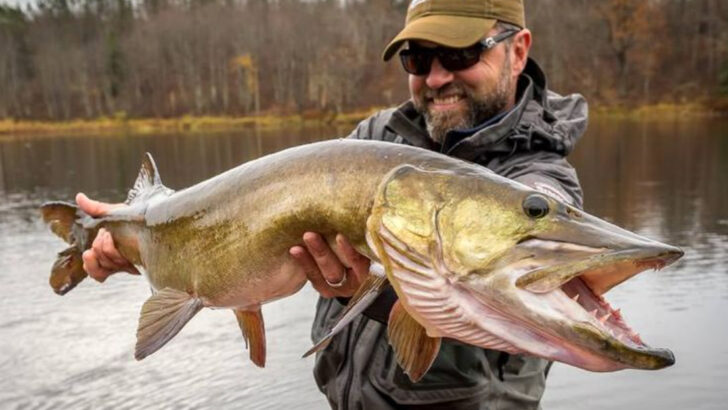Cast your line in a Wisconsin lake, and you never know what might bite.
It could be a feisty smallmouth that fights like a champ.
A northern pike lurking in the weeds like a silent torpedo.
Or maybe a lazy old catfish who looks like he’s seen things.
These lakes aren’t just pretty—they’re packed with personality, gills, and teeth.
Whether you’re an early-morning angler or just love watching fins ripple the surface at sunset, Wisconsin waters are full of surprises. Some fish flash silver. Some hide in the deep like underwater ghosts. And a few… well, let’s just say they weren’t built to be subtle.
From panfish to predators, these are the 15 fish you’re most likely to reel in—or at least spot—next time you’re near the water.
Largemouth Bass
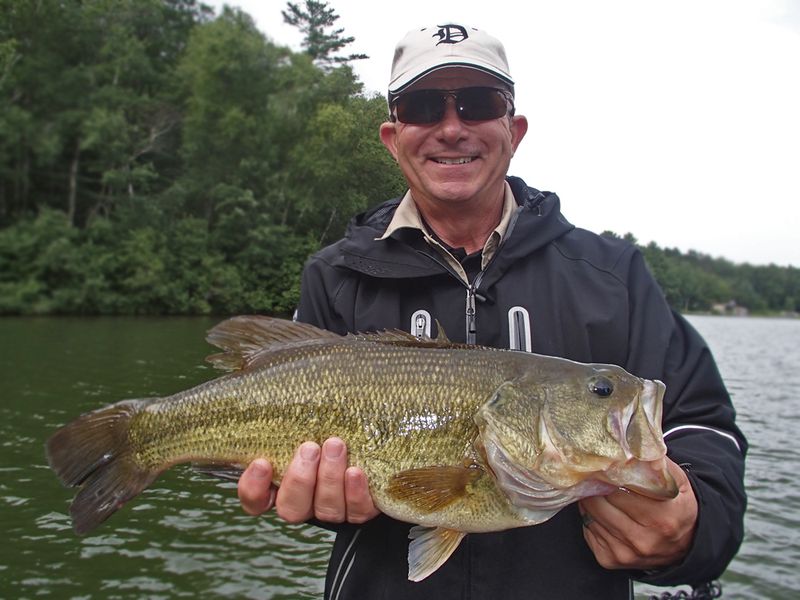
Largemouth Bass are known for their aggressive nature and incredible fight when hooked. These fish are a favorite amongst anglers and can be found throughout Wisconsin’s lakes. Often dwelling in shallow, vegetated waters, they are recognizable by their large mouths and olive-green body.
With an appetite for smaller fish and insects, the Largemouth Bass is often a top predator in its habitat. They spawn in late spring, creating nests in sandy or gravelly lake beds. This fish’s presence is a sign of a healthy aquatic ecosystem.
Did you know? The largest recorded Largemouth Bass weighed over 22 pounds!
Northern Pike
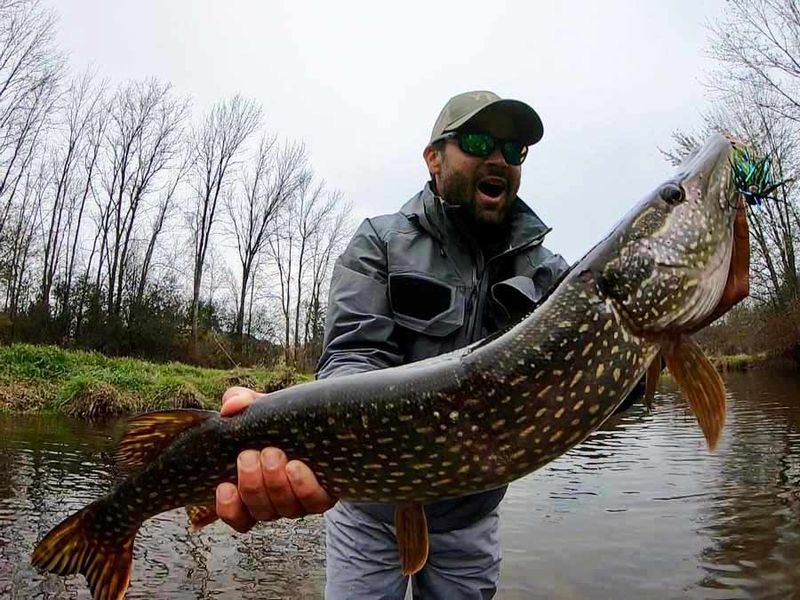
Fierce and stealthy, the Northern Pike is a hunter of the lake. Its elongated body and sharp teeth make it a force to be reckoned with. Found in abundance across Wisconsin, these fish thrive in cold, clear waters.
They are solitary creatures, preferring to ambush their prey. Northern Pike are often spotted near submerged structures where they lie in wait. They can grow impressively large, adding to their allure among anglers.
Fun fact: The name ‘pike’ is derived from the fish’s resemblance to a pole-weapon used in medieval times, called a pike.
Bluegill

Bluegills are a delightful sight in Wisconsin’s lakes. Known for their bold colors and friendly demeanor, these fish are often the first catch for novice anglers. They thrive in warm, weedy waters and are easily identified by their compressed bodies and the distinctive black spot on their gills.
In the summer, Bluegills often form schools near the surface, where they feed on insects and small invertebrates. Their adaptability makes them a vital part of the aquatic food chain.
Interesting tidbit: Bluegills are known to communicate with each other using low-frequency sounds!
Walleye
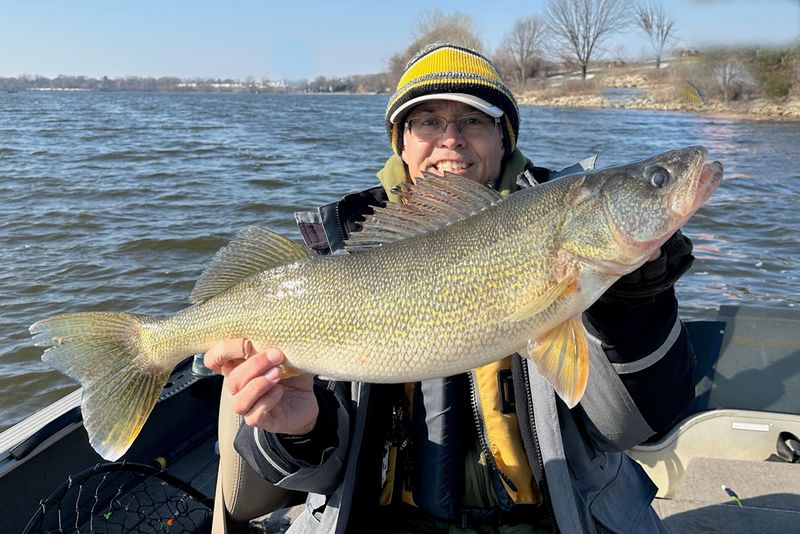
The Walleye is aptly named for its large, reflective eyes, which give it an advantage in low-light conditions. Predominantly found in deeper waters, these fish are a popular target for their delectable taste.
Walleyes are nocturnal hunters, often venturing to shallower waters under the cover of darkness. They have a sleek, torpedo-shaped body that aids in swift, precise movements.
Did you know? Walleyes have a layer of reflective cells in their eyes, similar to a cat’s, enhancing their night vision and making them efficient nighttime feeders.
Crappie
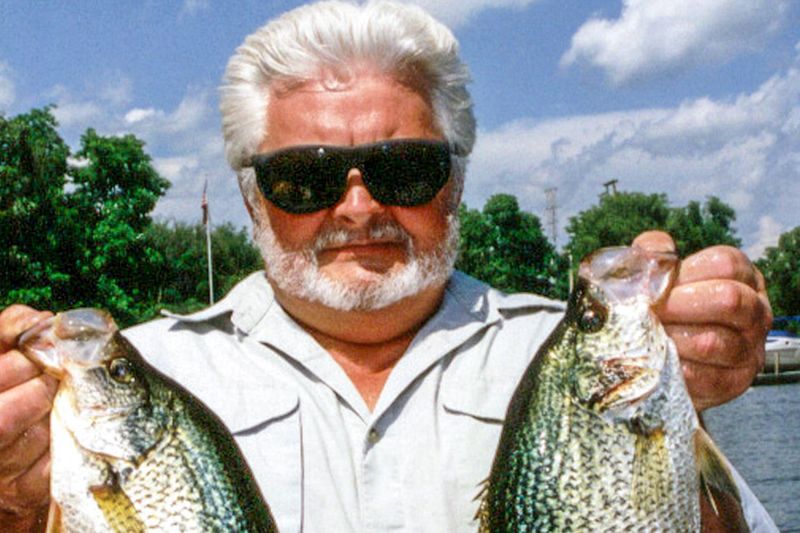
Crappies, with their spotted bodies and silvery scales, are a cherished catch in Wisconsin’s waters. They are known for their schooling behavior and can often be found near submerged trees and vegetation.
These fish are particularly active during the spring and fall, when they move closer to the shore for spawning. Crappies feed on small fish and insects, contributing to their rapid growth and reproduction.
Fun fact: There are two main species of crappie in Wisconsin – the black crappie and the white crappie, each with distinct patterns and habitat preferences.
Muskellunge
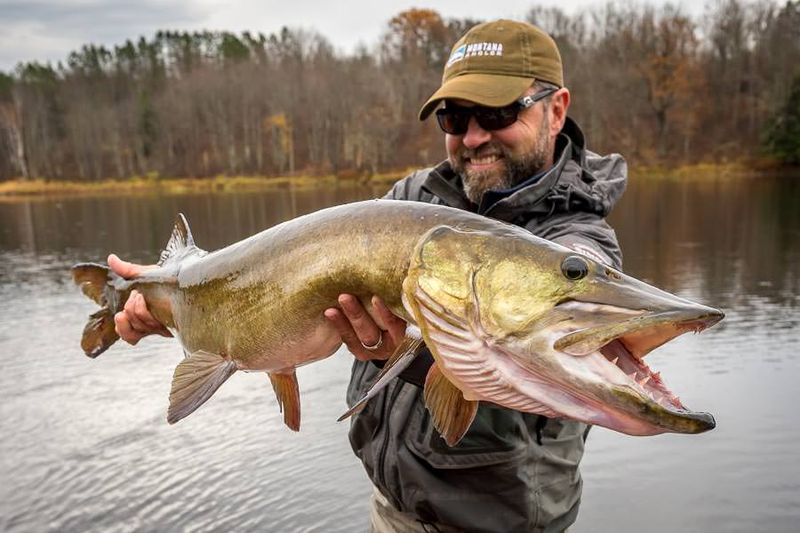
The Muskellunge, often referred to as the ‘fish of ten thousand casts’, is a prized catch for anglers seeking a challenge. Recognizable by its elongated body and tiger-like stripes, this fish is an apex predator.
Muskellunge prefer clear, vegetated waters where they can ambush prey. They are solitary by nature and can grow to impressive sizes.
Did you know? The largest recorded Muskellunge caught in Wisconsin weighed 69 pounds and measured over 5 feet in length! This fish’s elusive nature and size make it a legendary target among fishermen.
Yellow Perch
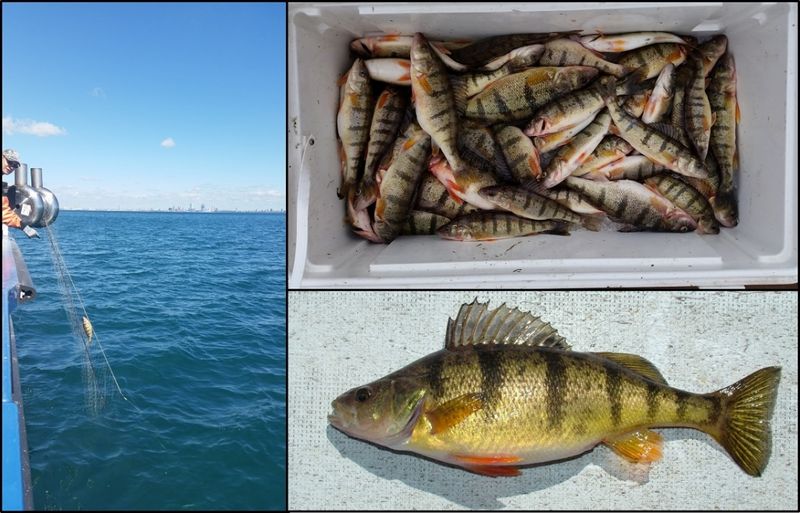
Yellow Perch are a common sight in Wisconsin’s lakes, known for their striking yellow bodies and dark vertical stripes. These fish are popular among both anglers and nature observers.
They thrive in cooler waters and are often found in schools near the lake bottom. Yellow Perch feed on invertebrates and smaller fish, making them an essential part of the aquatic ecosystem.
Fun fact: Yellow Perch are known for their migratory patterns, often moving to different depths and areas of the lake depending on the season.
Smallmouth Bass
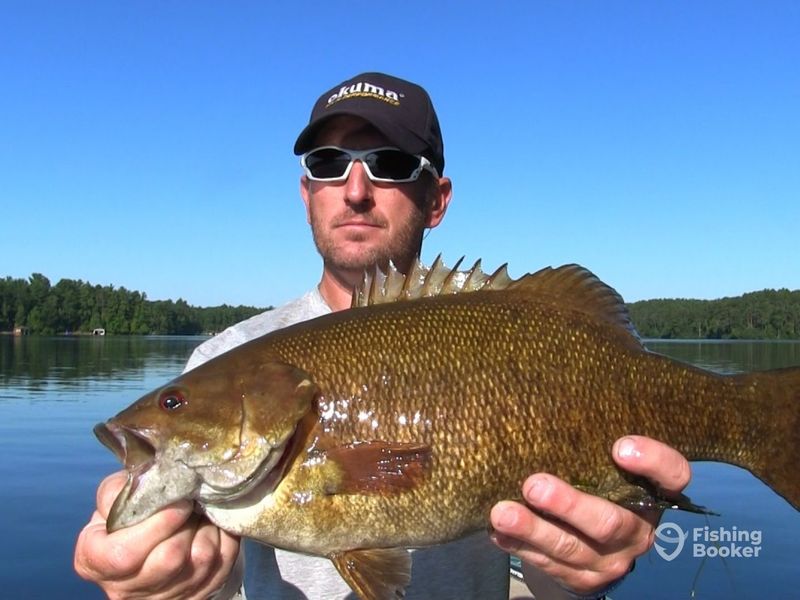
Smallmouth Bass are celebrated for their fighting spirit and are a favorite among sport fishermen. Their bronzy bodies and red eyes are distinctive features that make them easily recognizable.
These fish prefer rocky, clear waters and are often found near the lake bottom. Their diet consists mainly of crayfish and smaller fish.
Interesting tidbit: Despite their name, Smallmouth Bass are known to jump out of the water to shake off hooks, providing an exhilarating experience for anglers. Their acrobatics and strength make them a thrilling catch.
Lake Sturgeon
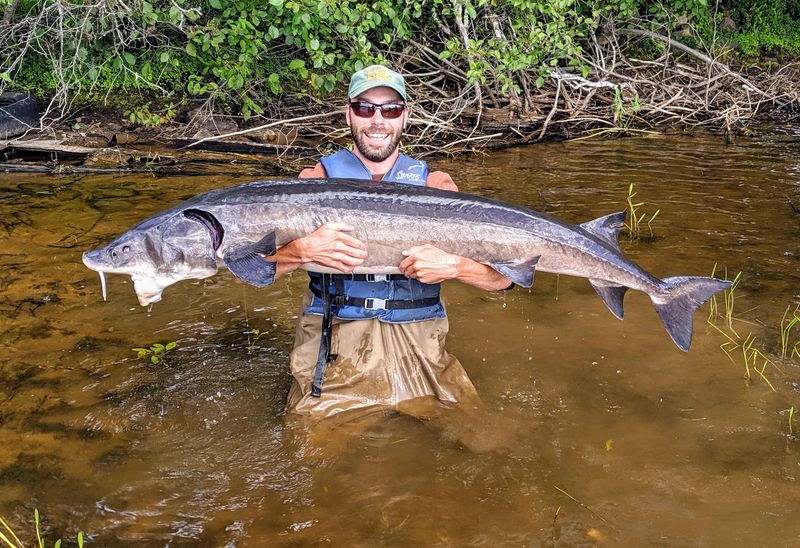
With its prehistoric appearance, the Lake Sturgeon stands out among Wisconsin’s aquatic inhabitants. Known for their bony plates and long lifespan, these fish can live for over 100 years.
Lake Sturgeon are bottom dwellers, preferring the depths of large lakes. They feed on small invertebrates and are an indicator of water quality.
Did you know? The Lake Sturgeon is the largest fish in the Great Lakes, with some individuals weighing over 200 pounds. Their long history and unique looks make them a fascinating species to observe.
Pumpkinseed Sunfish
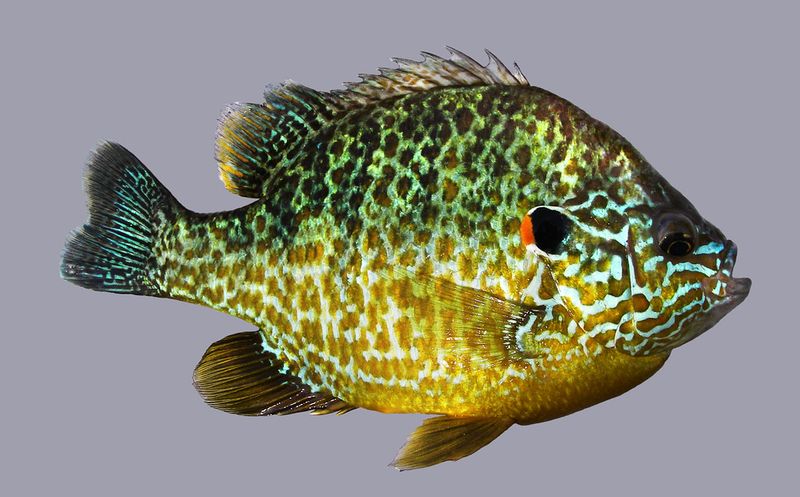
The Pumpkinseed Sunfish adds a splash of color to Wisconsin’s waters. Their vibrant patterns and round bodies are a delight to witness, making them a popular species among young anglers.
Pumpkinseeds thrive in weedy, shallow waters where they feed on insects and small crustaceans. They are often observed basking near the surface during sunny days.
Fun fact: Pumpkinseed Sunfish are named for their distinct shape and color, reminiscent of a pumpkin seed. Their playful nature and vivid appearance make them a favorite among fish enthusiasts.
Rock Bass
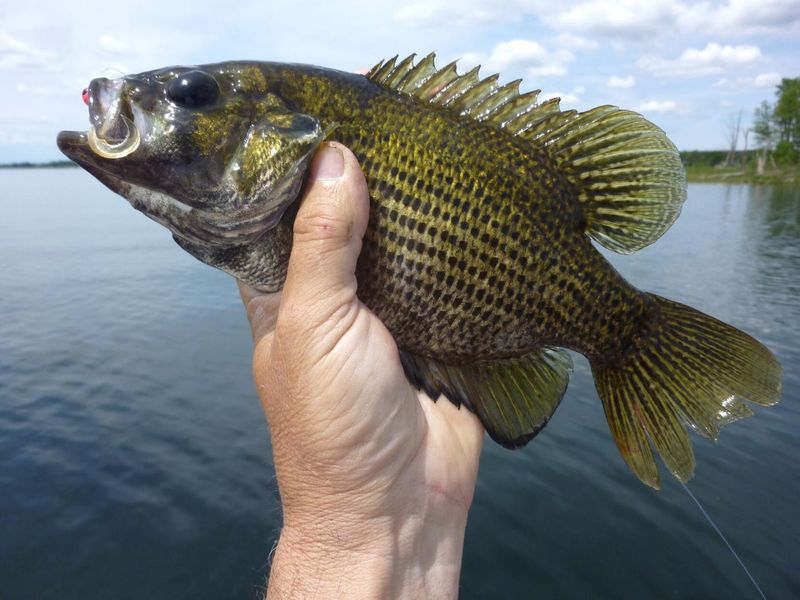
Rock Bass are easily spotted by their red eyes and robust bodies and are commonly found in Wisconsin’s rocky lake environments. These fish are opportunistic feeders, preying on insects and small fish.
Their adaptability allows them to thrive in various habitats, from clear waters to murky environments. Rock Bass are often seen lurking near rocky outcrops and submerged logs.
Interesting tidbit: Rock Bass are sometimes called ‘goggle-eyes’ due to their prominent eyes, which enhance their vision in different lighting conditions. Their unique appearance makes them a standout species.
Channel Catfish
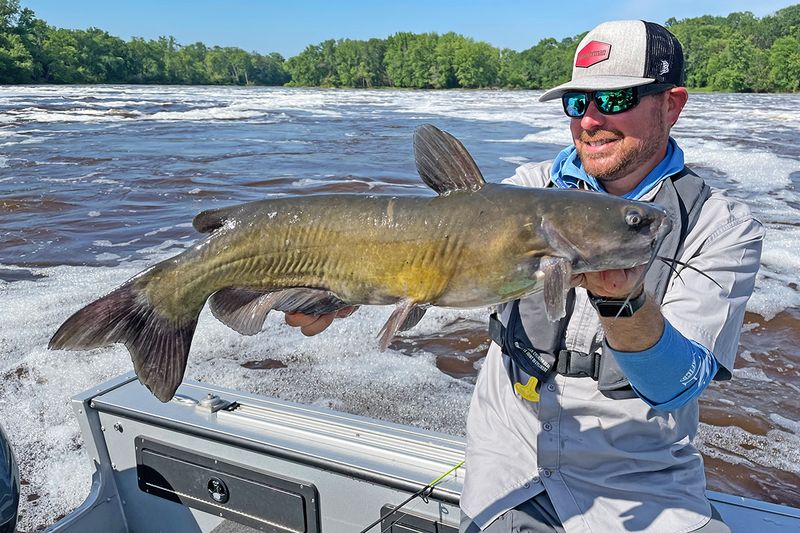
Channel Catfish are known for their whisker-like barbels and are a common species in Wisconsin’s lakes. These fish prefer murky waters where they use their keen sense of smell to locate food.
They are nocturnal feeders, often searching for food along the lake bottom. Channel Catfish are highly adaptable, thriving in a variety of aquatic environments.
Fun fact: Channel Catfish have taste buds all over their bodies, allowing them to detect food in their surroundings. Their unique sensory abilities make them fascinating creatures to study.
Brown Trout
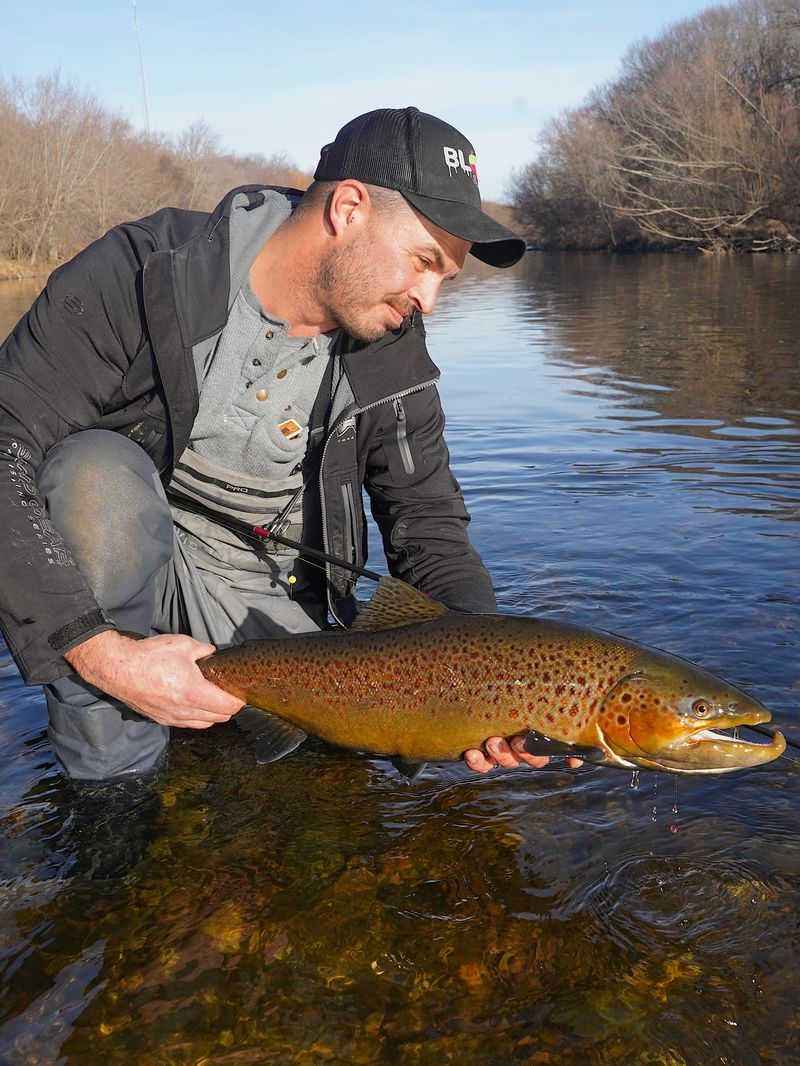
Brown Trout are a prized catch for their elusive nature and tasty flesh. Their speckled bodies and golden hue make them a beautiful sight in Wisconsin’s waters.
These fish prefer fast-flowing streams and rivers, where they feed on insects and smaller fish. Brown Trout are known for their impressive bursts of speed and strength during a fight.
Did you know? Brown Trout are not native to North America; they were introduced from Europe in the late 1800s. Their adaptability has allowed them to establish robust populations in Wisconsin.
Rainbow Trout

Rainbow Trout are renowned for their stunning iridescent scales and acrobatic leaps. These fish are a favorite among fly fishermen in Wisconsin’s clear streams and rivers.
With a diet consisting of insects and crustaceans, Rainbow Trout are skilled hunters. Their vibrant colors and energetic behavior make them a captivating species to catch and observe.
Interesting tidbit: Rainbow Trout are part of the salmon family and are known for their spawning migrations, similar to salmon. Their striking appearance and lively nature make them a popular target for anglers.
Brook Trout
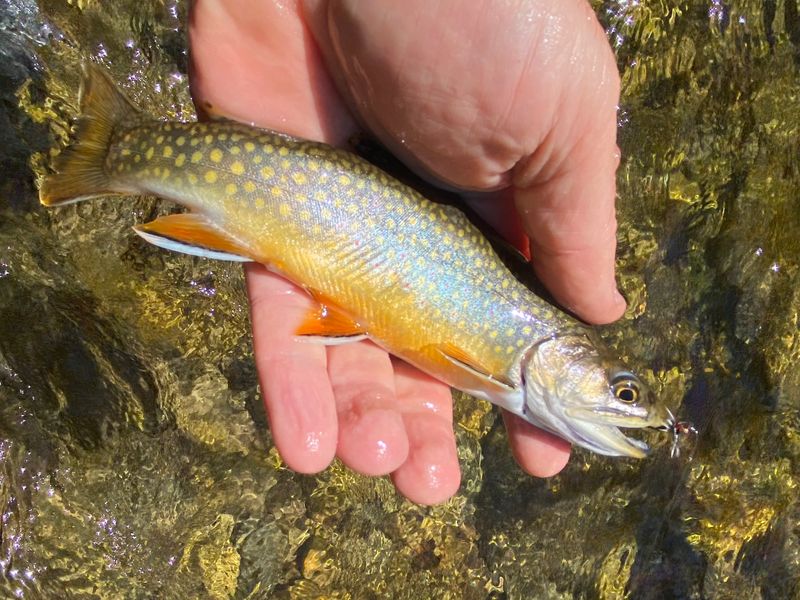
Brook Trout are a symbol of pristine wilderness in Wisconsin’s waterways. Their distinctive white-edged fins and speckled bodies make them a charming sight.
These fish thrive in cold, clear streams, often found in shaded areas with plenty of cover. Brook Trout are opportunistic feeders, preying on insects and small fish.
Did you know? Brook Trout are actually a type of char, not true trout. Their preference for unpolluted waters makes them an indicator species for environmental health. Their presence signifies a thriving and balanced ecosystem.

